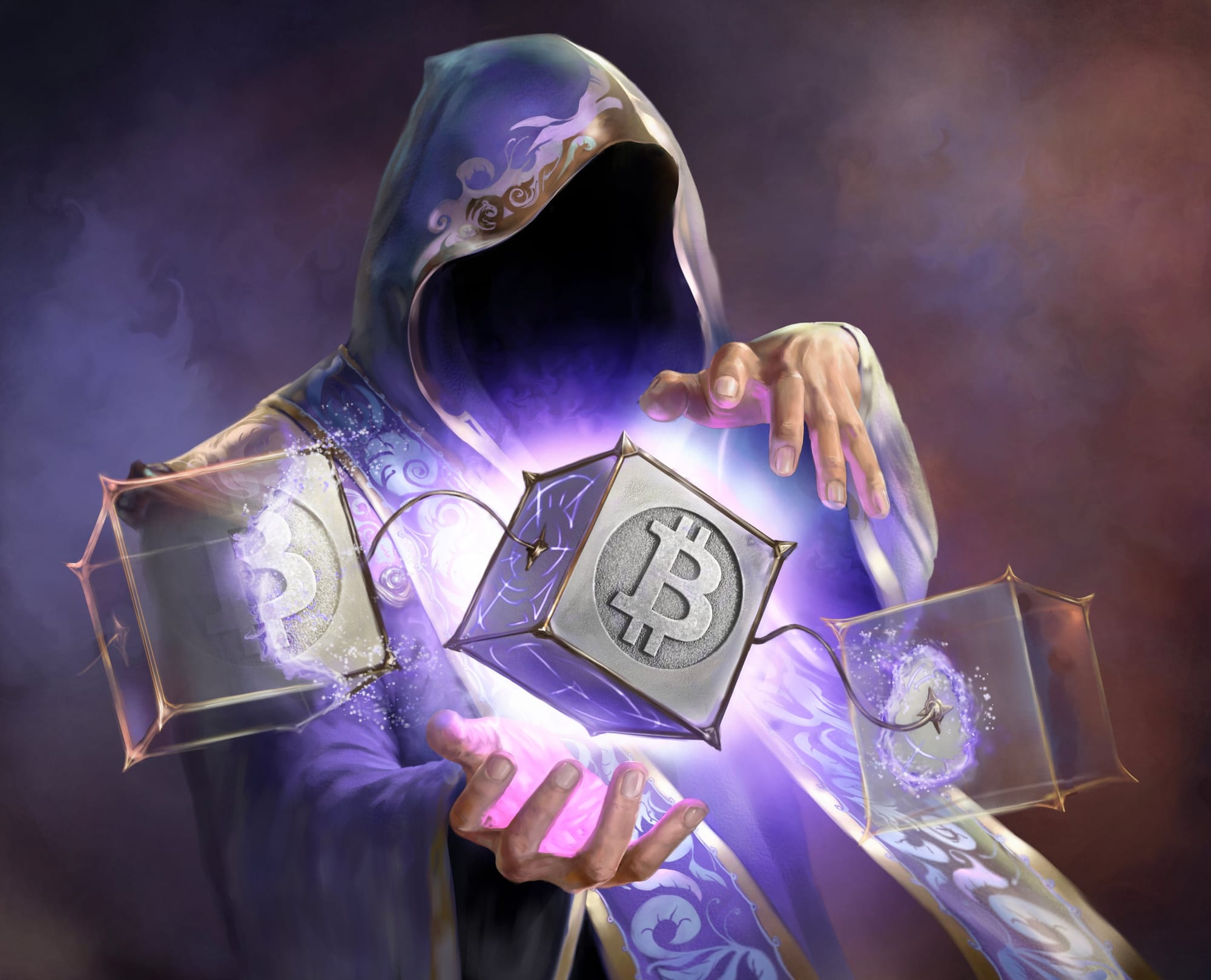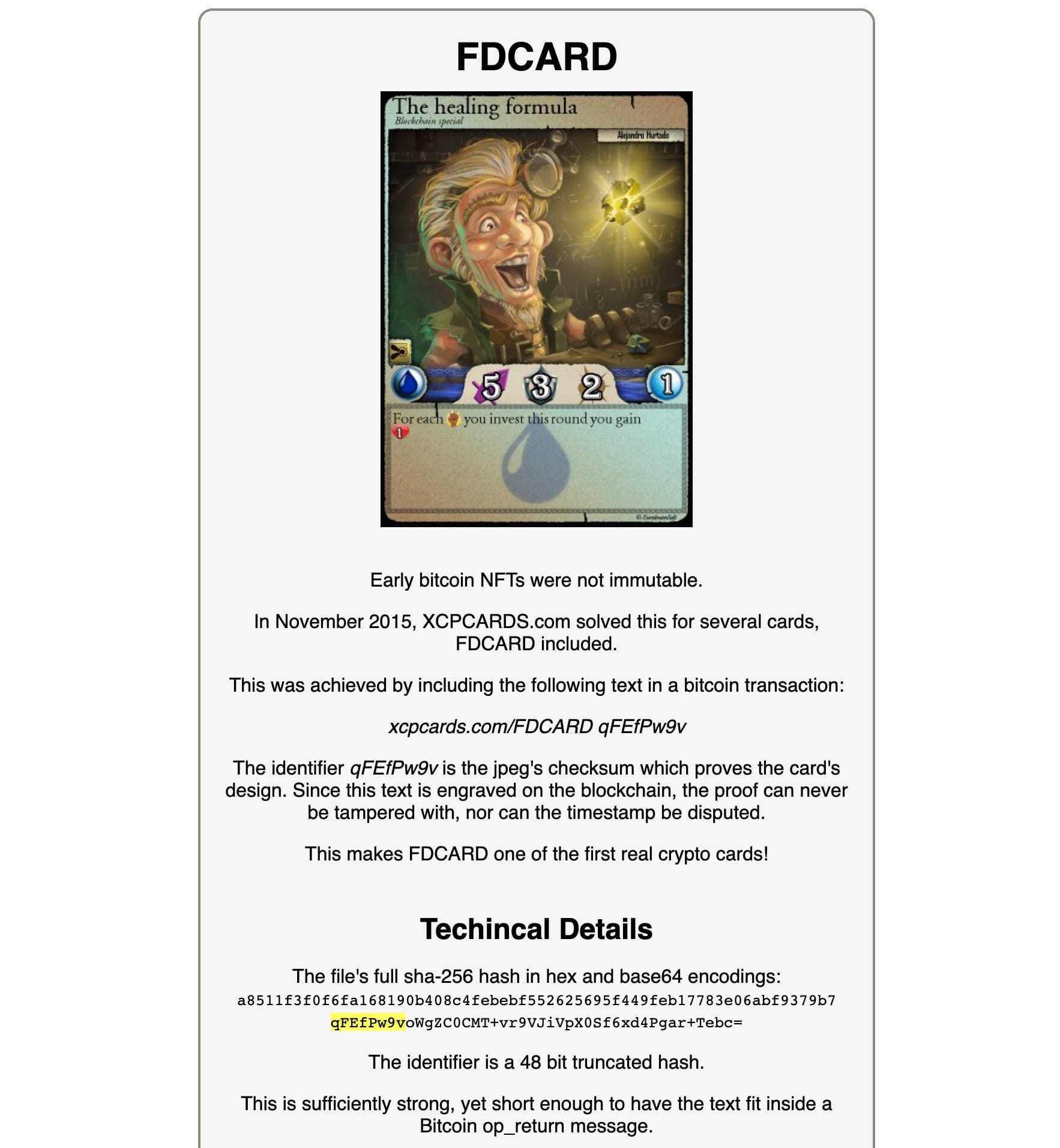Restoring 2015 Spells Of Genesis NFTs
The NFT relics period, meaning NFTs created between 2011-2017, comprise mostly of assets fraught with different levels of imperfection

The NFT relics period, meaning NFTs created between 2011-2017, comprise mostly of assets fraught with different levels of imperfection
- Duplicate contracts (many early Ethereum collections)
- Expiration, lack of intent (many early Namecoin assets)
- Lack of on-chain tokens (many early Counterparty assets)
These provenance flaws aren’t easy to remedy; you can’t un-deploy a previous contract of an NFT collection, or un-expire a domain name, or attach an image hash in 2015 now we’re in 2023.
Early Spells Of Genesis cards, like most early Counterparty assets, suffer from not having linked on-chain image hashes at the time of issuance.
But, unlike most other early collections, it has an opportunity to have this flaw partially remedied thanks to JP Janssen, an early Bitcoin NFT pioneer.
Nov 2015: JP Janssen Puts SoG Image Hashes On-Chain
Early November 2015, JP Janssen launched XCP CARDS project, a crypto card trading directory. One of the entry requirements was that cards needed to be notarised on-chain in some way.
Noticing that Spells Of Genesis cards had no on-chain hashes, he decided to broadcast image hashes of 25 out of the 29 Spells Of Genesis cards that existed at the time, enshrining these asset/image references directly onto Bitcoin.

The 25 cards that had their image hashes broadcast on-chain were:
FDCARD, SJCXCARD, GEMZCARD, ETHEREUMCARD, SHAPESHIFTCD, XCPCARD, SATOSHICARD, RIPPLECARD, GENESISCARD, SWARMCARD, SHUMAICARD, CNPCARD, BEARWHALECD, BLOCKSIZECD, ETHXCPCARD, LTBCARD, XAJIBASILAAR, XAJIJASPAAR, XAJIYEREMAAR, XAJIARKETAAR, XAJIBESAAR, ZAIFCARD, BAZAARCARD, GOXCARD, MINERCARD.
The 4 cards that existed during JP’s enhancements that were not hashed on-chain:
WHEREBCYCARD (skipped), CARDAUGUR (skipped), CARDAIRBITZ (skipped), CLEFCARD (the first attempted hash by JP - but the hashing algorithm was incorrect).

At the time this project was seen as a cool experiment but, in retrospect, massively boosted the technical credentials of these 25 cards from a collectors perspective:
🙅♂️ No duplicate contracts
🙅♂️ No expiration or lack of intent issue
💪 They live on Bitcoin
🕵️♂️ They have 2015 image hashes on-chain
Not a perfect 10 at all (that would have meant the team hashing the assets directly at the time of issuance) but the fact these 2015 hashes exist gives the team a chance to renovate these cards in a way that is both historically accurate and blockchain-provable.
The Restoration Process
There are many ways Everdreamsoft could renovate these cards, but here is an objectively strong method, with respect to utilising existing on-chain hashes.
Using FDCARD as an example, the restoration process for each card would involve three simple description updates, in order:
qFEfPw9voWgZC0CMT+vr9VJiVpX0Sf6xd4Pgar+Tebc=
Gs/N2s1PQ2rDIzc7+/b/qEtGfqqJsMW7vnAJCh/WSxA=
ORD:kZgDoymKPpW7GZtviB65f8WWpQDFOoHCKrh0wKSijT8=
The first description update gives official endorsement to the original Moonga FDCARD design hashed by JP Janssen in 2015 (xcpcards.com/FDCARD qFEfPw9v).
The second description update hashes the current, well-known and widely used FDCARD design on-chain.
The third description update directly links an on-chain ordinal inscription of FDCARD (this inscription card hash is an exact match of the image hash in the second step) to the counterparty asset.
These three simple steps for each card would help decentralize and future-proof some of the oldest and most historically important NFTs ever made.
🔥 October 2023 Update 🔥
Shortly after writing this article, I ended up working with Shaban Shaame of Everdreamsoft to renovate both the FDCARD and SATOSHICARD.
We went with the method in this article; a sets of hashes each (old & new designs) before putting the new designs fully on-chain via. Ordinal Inscription linking!
https://xchain.io/tx/2497397
https://xchain.io/tx/2521771
Here’s to more cards getting the restoration treatment in the near future! 🍾
